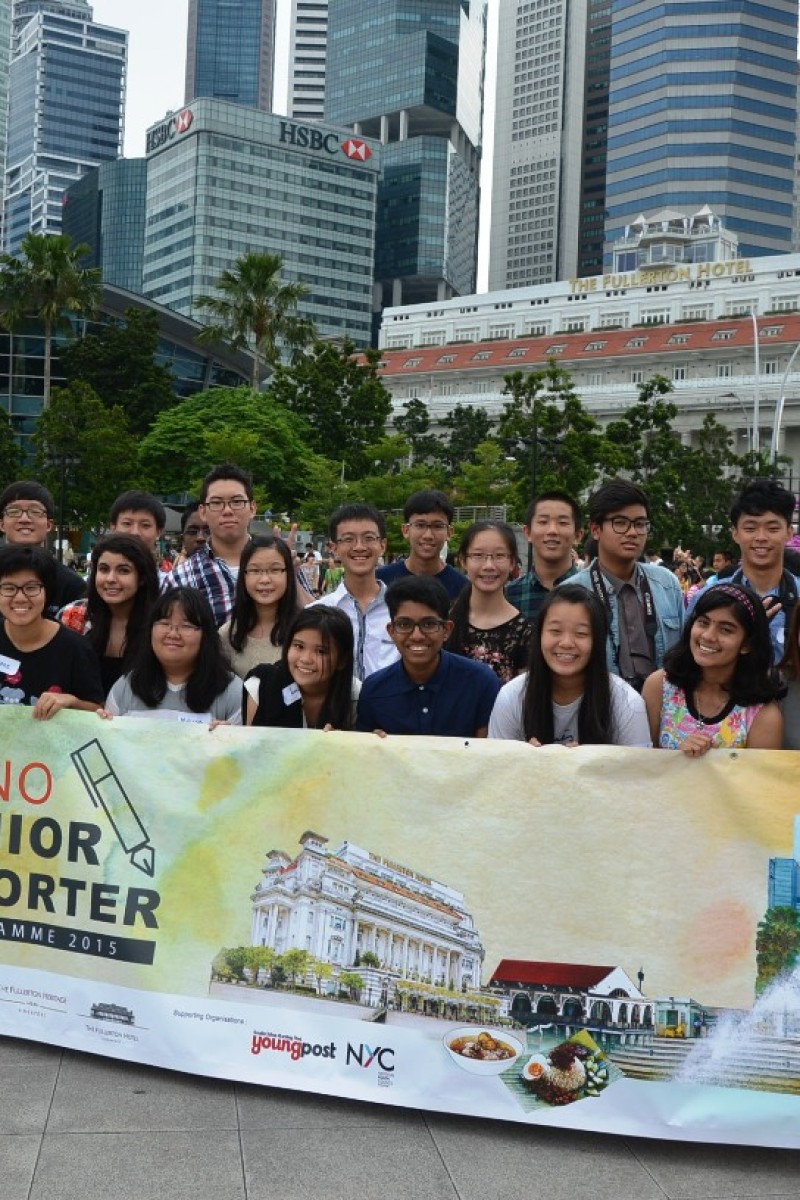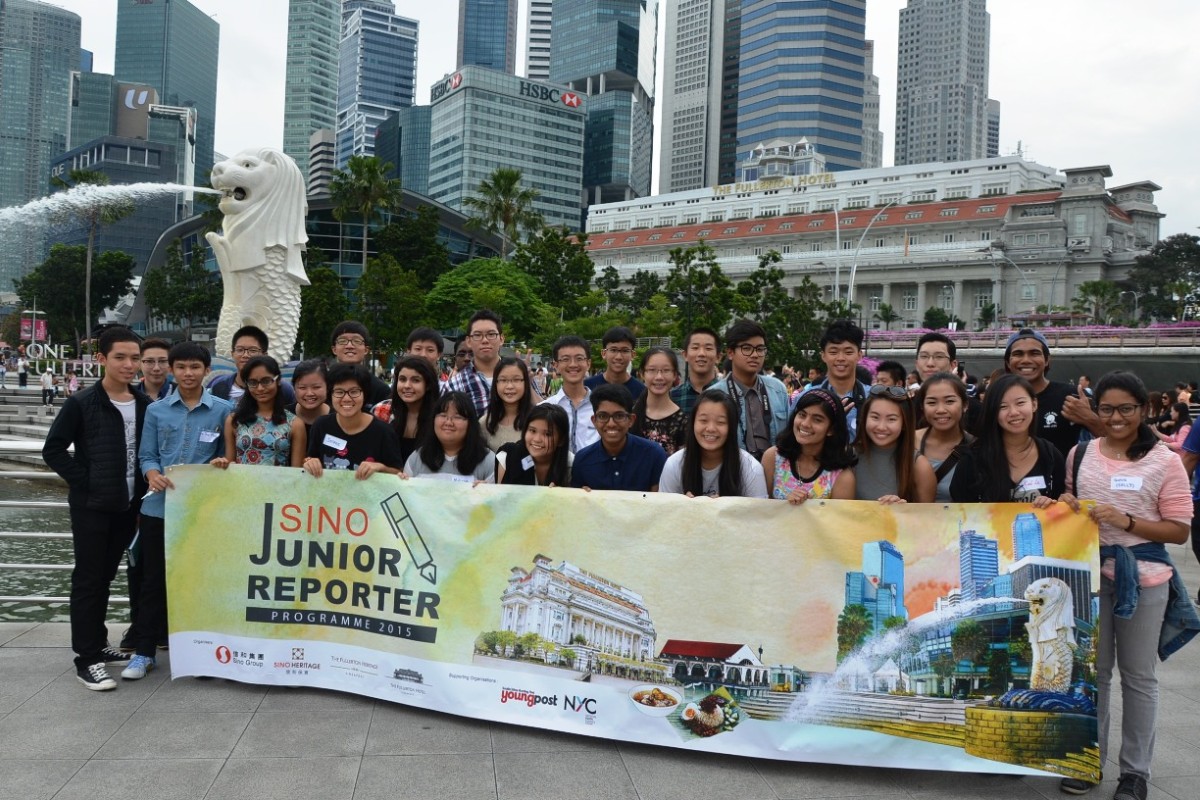
Our heritage should be remembered for shaping what Singapore is today
 The young reporters gather in Merlion Park with The Fullerton Hotel Singapore in the background.
The young reporters gather in Merlion Park with The Fullerton Hotel Singapore in the background.As Singapore’s 50th birthday draws closer, still standing strong are the buildings that have long been present before the country even came to independence. Be it strolling through a traditional textile shop in Kampong Glam or raving at a dubstep concert in Fort Canning Park, these buildings have stood the test of time and now serve as a link between current and past generations.
Juxtaposed with a modern and progressive lifestyle, Singaporeans should not forget that these monuments have played a huge part in shaping what the nation is today.
Serving as a notable reminder is The Fullerton Hotel, located next to the Singapore River at Raffles Place. Overlooking the Marina Bay Sands, these two iconic buildings of the past and present complement each other perfectly.
Known today by the average teenager as an ultra-luxurious hotel, The Fullerton Hotel, in fact, has a rich history behind it. Before it became a hotel, the building had played a pivotal role in shaping present-day Singapore.
That is why the heritage of places like these should be cherished deeply or, as Florence Minjoot, the hotel’s resident guide puts it, “Because, without remembering the past, how do we appreciate the present?”
The Fullerton Building, as it was formerly known, was built in 1928 and served as the general post office. As the primary mode of communication was by letters at the time, it is remembered by ordinary citizens as a place they would often go.
The upper floors also accommodated important government offices. “The Fullerton Building commanded huge respect from people all around as it played a vital role in the early years of Singapore’s independence,” says Minjoot.
A great deal of strategic planning for the growth of Singapore took place in that very building. Around the time of Singapore’s independence, our fifth President Mr Ong Teng Cheong and sixth President Mr S R Nathan were both working in the Fullerton Building, one as a seamen’s welfare officer and the other as a town planner respectively.
After two years of restoration and redevelopment, The Fullerton Building was officially opened and renamed as The Fullerton Hotel on 1 January 2000, the first day of the new millennium. Special architectural features were retained to preserve the rich heritage of the building. 15 years on, it has become a well-known five-star luxury hotel providing accommodation for tourists from all over the world, including celebrities and royalty.
It is really breath-taking to see how, in the span of 87 years, a mere piece of architecture played such a huge role in Singapore’s growth as a country and is still serving citizens and travellers up till this day, retaining fragments of history and beautiful stories of the past. I guess this is truly what heritage is about.